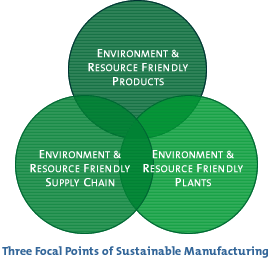



Energy can be the largest component of a company's cost structure. Most companies have formalized energy management programs, and many use automation and control technologies to help minimize energy costs. However, it is clear that many companies need to take their efforts to the next level by monitoring and optimizing energy use in real time, and through more widespread adoption of advanced automation technologies and energy management applications. Good energy management practices are essential for sustainable manufacturing.
Enterprises can achieve significant reductions in energy costs and greenhouse gas emissions when these efforts are executed in tandem with cross-functional responsibilities and reporting, including the financial operational, and environmental departments.
A data-driven approach to energy management is recommended as it is both most objective and repeatable. Data provides visibility into the amount of energy consumed, enables trending, and identifies energy hogs. New, low-cost wireless and internet-connected sensors could lower the cost of obtaining previously stranded energy management related data.
Energy and asset performance management are inextricably linked; improvement efforts in one area have a direct impact on the other. A smoothly operating process, which increases asset availability, is a more energy-efficient process. Please visit market analysis page for recent ARC research related to Energy Management and Sustainability.
Sustainability, one of the most talked about topics in supply chain, often focuses on greenhouse gas (GHG) emissions, green packaging, raising labor standards, use of renewable resources, and energy efficiency. However, when it comes to sustainability in logistics, transportation garners the maximum attention.
The most commonly adopted standards for building sustainability is the Leadership in Energy and Environmental Design (LEED) certification provided by the Green Building Council. While sustainability practices have not yet gained significant traction in most warehouses and distribution centers (DCs), this may be changing.
Designing these facilities for more sustainable operation and maintenance can contribute significantly to a more sustainable overall supply chain. Sustainable design helps ensure a healthy environment, encourages worker safety, and provides a winning edge. From a more critical business perspective, it also lowers operating costs, ultimately improving a company's financial performance. Though it is not mandatory today, businesses have started to see sustainability clauses inserted into requests for proposals (RFPs) for warehouses.


